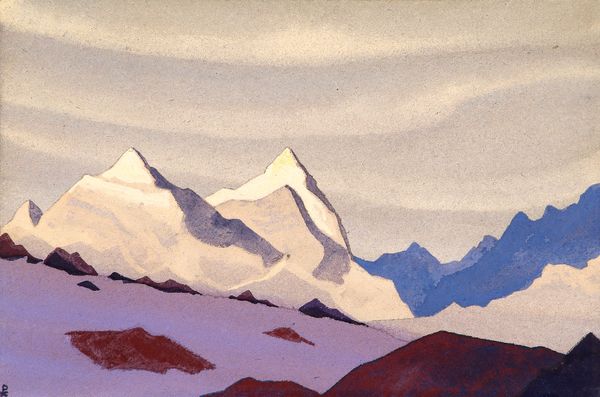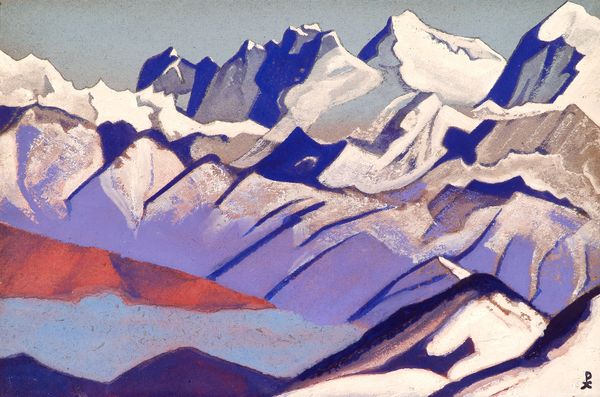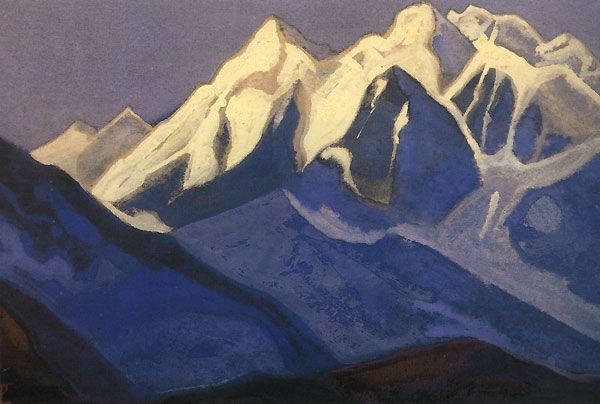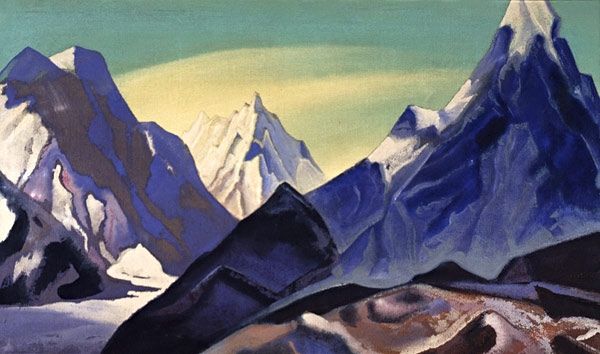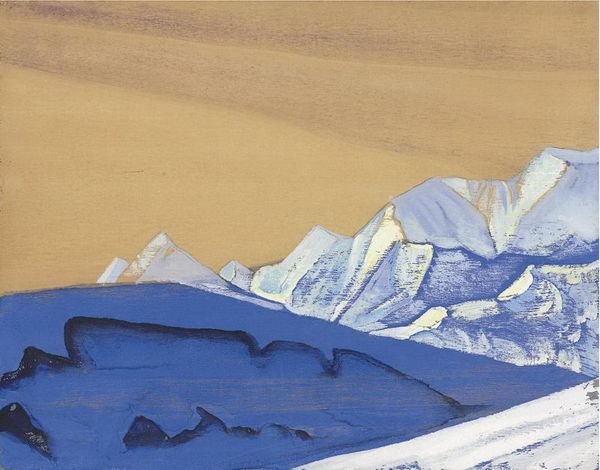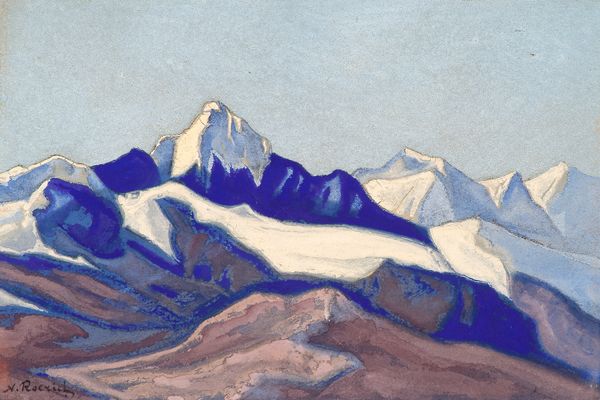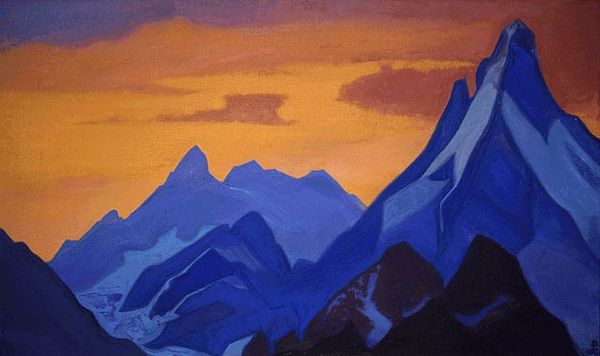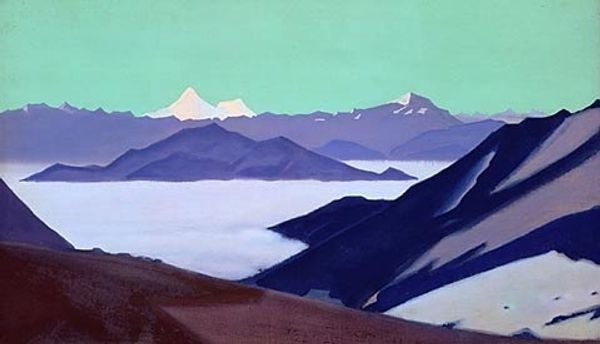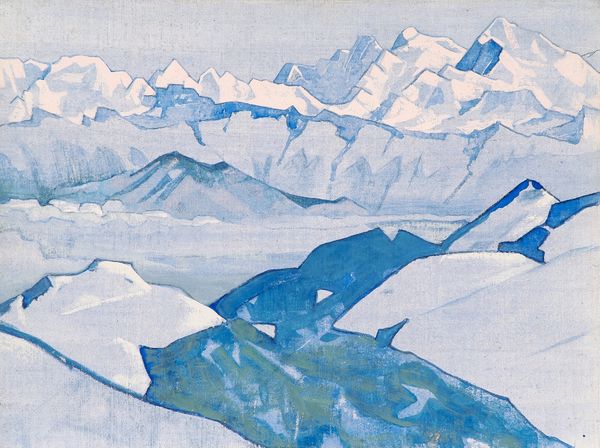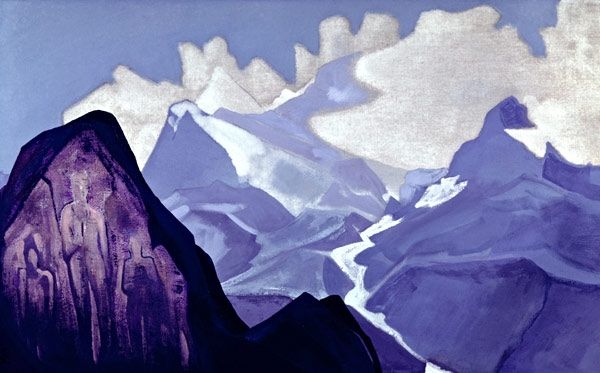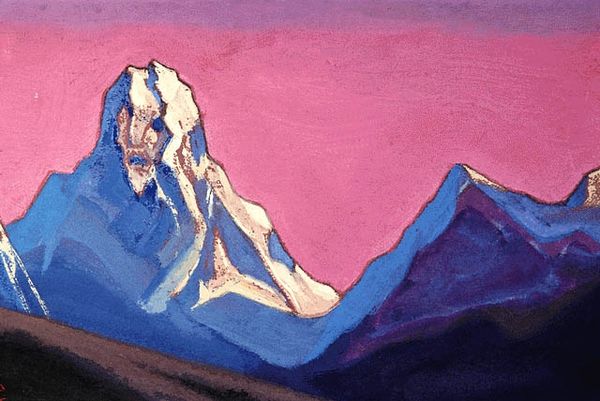
Dimensions: 46 x 79 cm
Copyright: Public domain
Editor: So, here we have Nicholas Roerich’s “Himalayas. Everest.” from 1938, an oil painting currently held at the State Museum of Oriental Art in Moscow. The landscape has a serene but also slightly otherworldly feel. What are your initial thoughts about the piece, seen from your perspective? Curator: Well, the Himalayas held a powerful spiritual significance, especially during the early 20th century when Roerich painted this. Many, including Roerich, saw it as a place of great spiritual power and refuge from industrialization. Consider its exhibition history – where and how would a painting like this have been displayed? Editor: That’s a really interesting point. It feels like it was trying to provide viewers with something beyond just a landscape, given its emphasis on these grand geological structures. In your view, was Roerich positioning art as a kind of spiritual or social sanctuary in itself? Curator: Precisely. Roerich and his wife Helena were deeply involved in theosophy and believed that art could elevate humanity’s consciousness. So the 'where' this work might have been displayed is as important as 'who' saw it. Would it have been publicly accessible, or part of a private collection, advancing specific ideologies or hidden meanings through that very ownership? Think about who gets access to art and what that means. Editor: So the mountain as an image gains more meaning through Roerich's personal context, and is heightened depending on whether the viewing public, or an individual, consumes his art. Considering the pink sky juxtaposed with the mountain's varying blue tones, are we meant to interpret this as escapism or an artistic warning against a very particular world? Curator: Perhaps both. The symbolic use of the mountain is layered with these contradictions. But consider also how it reflects the institutions exhibiting such 'Oriental' art and what expectations, limitations, and maybe biases might already be embedded into them. Editor: Right. Seeing it now, I think that really pushes me to analyze not only the artist, but how public perception and location shapes everything. Thank you! Curator: Absolutely. Analyzing these layers reveals not just the art’s content, but the very real societal dialogues occurring through and around it.
Comments
No comments
Be the first to comment and join the conversation on the ultimate creative platform.
